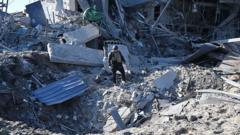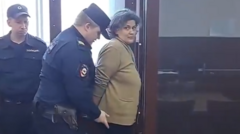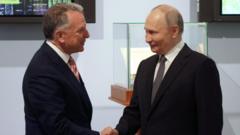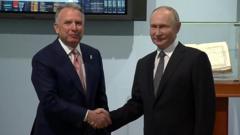Georgian-Russian artist Zurab Tsereteli, known for his vast and often contentious sculptures, has passed away at the age of 91, leaving behind a complex legacy that has stirred debate within the art community and beyond.
Zurab Tsereteli: Celebrated Sculptor and Controversial Figure Passes Away at 91
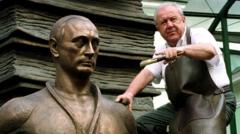
Zurab Tsereteli: Celebrated Sculptor and Controversial Figure Passes Away at 91
Renowned for his monumental artworks, Tsereteli's legacy is marked by both admiration and criticism.
Zurab Tsereteli, the celebrated Georgian-Russian artist famous for his grand and sometimes polarizing sculptures, has died at the age of 91. Born in Tbilisi, Tsereteli gained prominence during the Soviet era, creating iconic works such as the towering 98-meter monument to Tsar Peter the Great in Moscow—an artwork that has sparked intense discussions among locals regarding its aesthetic and historical legitimacy.
Throughout his career, Tsereteli collaborated closely with Russia's political elite, including his admiration for President Vladimir Putin, which was evident in his bronze representations of the leader. His deep connections to the Russian power structure enabled him to travel internationally, where he mingled with major figures in the art world, such as Pablo Picasso.
Tributes have poured in following Tsereteli's death, with Russian Foreign Ministry spokeswoman Maria Zakharova calling him "an artist of world renown" who transcended boundaries through art. His works, including monuments found in New Jersey, Spain, and at the United Nations Headquarters, reflect a variety of themes from wartime remembrance to cultural legacy.
Nevertheless, Tsereteli's works have not escaped controversy. The bipartisan sensitivity surrounding his massive public installations, such as those in tribute to both historical and contemporary figures, has garnered mixed responses. Some have celebrated his artistic vision, while others have critiqued the size and scope of his projects, describing them as overpowering or irrelevant in the contemporary cultural landscape.
In addition to his monumental sculptures, Tsereteli was also an accomplished painter and architect. His diverse portfolio spans from floral studies to the reconstruction of Moscow's Cathedral of Christ the Saviour, showcasing his multifaceted talents within the art world.
As Tsereteli's works are likely to continue dominating public spaces and sparking dialogue for years to come, the impact of his artistic vision will be felt long after his passing, prompting ongoing discussions about the role of art in society and local identity.





